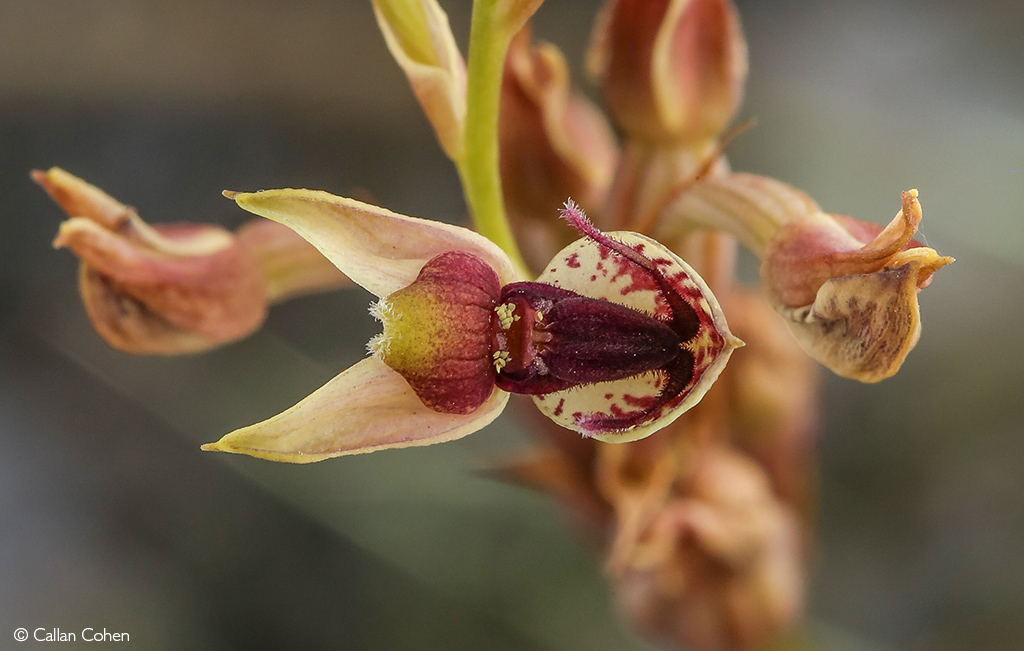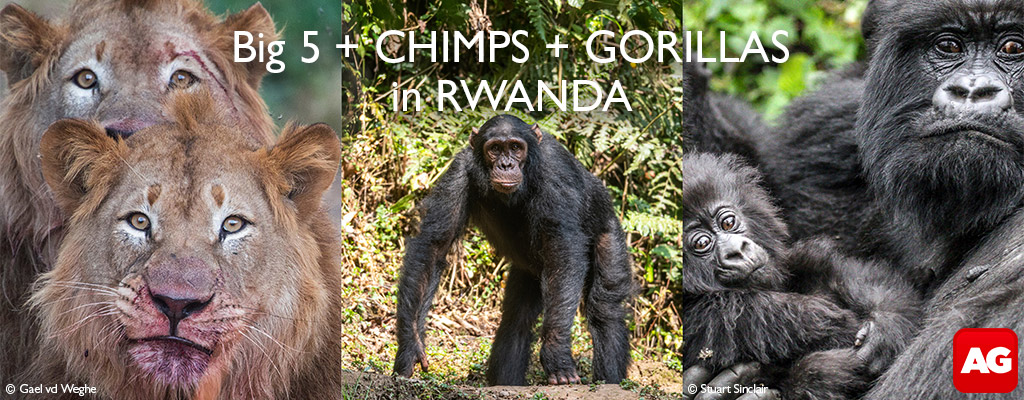 Deep in the heart of the fynbos of South Africa lives a rare orchid, Disa forficaria, which has a fascinating relationship with its pollinator, the longhorn beetle, Chorothyse hessei. From the title of this article, one might think it should come with a PG rating but rest assured – this is simply nature at work in her strange and wonderful ways. The story of how the relationship between Disa forficaria and the longhorn beetle was discovered is fascinating in itself.
Deep in the heart of the fynbos of South Africa lives a rare orchid, Disa forficaria, which has a fascinating relationship with its pollinator, the longhorn beetle, Chorothyse hessei. From the title of this article, one might think it should come with a PG rating but rest assured – this is simply nature at work in her strange and wonderful ways. The story of how the relationship between Disa forficaria and the longhorn beetle was discovered is fascinating in itself.
Disa forficaria is an orchid species identified from only nine plants from 11 records in the past 200 years and was considered extinct until one plant was rediscovered in 2016. Secondly, this orchid flowers only once every two years. Thirdly, only one flower opens at a time, and usually only if the sun is shining. Lastly, its pollinators’ activity is tightly linked to the midday hours. Nevertheless, after many visits to the lone specimen of Disa forficaria, biologist Callan Cohen struck lucky. One sunny day he found that one of the orchid’s intricate flowers was in full bloom, and he was taking photographs of this rare beauty when he saw what he thought was a wasp landing on the lip of the flower. He watched in amazement when the wasp-like insect started to copulate with the flower.
This looked like a case of sexual deception. The flower was attracting pollinators to its blooms by mimicking a female insect. But to prove this, further investigation was needed, and so Cohen assembled a team of scientists, each a specialist in either pollination, entomology, orchids or chemistry. They started to piece the remarkable puzzle together.

The pollinator
The scientists established that the suspect was not a wasp but a wasp-mimicking endemic longhorn beetle, C. hessei, and so, after noting that the only insects that visited the orchid were individuals of the longhorn beetle, and only males, the scientists set out to discover what was attracting this beetle to this flower.
The flower
The flowers of the Disa forficaria don’t have any nectar or food rewards but instead sweeten the deal by providing a “boudoir” for the beetle-gentlemen. One could say that the flowers are “dressed up” to look and smell like female longhorn beetles. Orchid species generally have flowers with a modified median petal – the labellum – and, together with the two horizontal petals, the flower forms a landing platform for a visiting insect. The labellum of this particular orchid species is hairy and kidney-shaped and at its tip is a hairy cleft. At the other end of the lip are some narrow, hairy petals which curve backwards, have minute hairs, and resemble antennae.
The interaction between beetle and flower
So what is the motive for the beetle? The male longhorn beetle wants a female longhorn beetle. But the wool is pulled over the male longhorn beetle’s eyes. First, he gets the scent of a female beetle. He follows it, and on arriving at a flower of D. forficaria, he lands on the flower’s labellum and sees some fine, curved petal appendages. He begins to stroke these with his antennae and also even occasionally bites the petals (which is common mating behaviour described for other longhorn beetles). He then starts copulatory behaviour. The authors have even found beetle sperm in the petal’s cleft. So how does pollination occur? The beetle is similar in length to the flower’s lip, and this means that it is perfectly positioned, whilst in the act of releasing its sperm, for the pollen packages attached to its thorax (gathered from previous foraging trips) to be deposited onto the orchid’s stigma. The authors observed that flowers that had been pollinated by the beetle later developed into fruit, thus showing the success of the pollination “event”.

The scent of a woman-beetle
But how did the beetle find his flower lover? The authors observed that the beetles used typical odour-tracking foraging movements, which was a clue to what attracted them: the scent. They then obtained an extract from the flower and, using complicated and intensive experimentation, identified the volatile compound in the floral extract which could be involved in the attraction. They called this compound ‘disalactone’ and proceeded to synthesise more of it. After establishing that longhorn beetle antennae reacted to puffs of this scent in the laboratory, they took this “beetle perfume” into the field to test it.
To determine whether the compound attracted the longhorn beetle, they set out an array of open glass vials, some containing the disalactone and others just acetone (to act as a control). They found that the jars of the disalactone attracted C. hessei longhorn beetles, all of which were male. The control jars did not attract any beetles.
In the meantime, as all this analysis and experimentation was happening in the laboratories, the original orchid plant in the field had sadly disappeared. But the scientists proceeded to do field experiments near the original orchid plant. This time they got creative and made model flowers consisting of dark beads on a dry reed, with ‘‘antennae’’ of plastic-coated wire and a small tuft of hair approximating the hairy lip of the flower at one end of the model. Some of the model flowers were treated with a droplet of disalactone in acetone, and the others with pure acetone (controls). Lo and behold, male C. hessei beetles were attracted to the disalactonen flowers and “frenetically” copulated with them too.
From this, the authors deduced that these orchids were luring the males to their flowers with a particular scent, most likely a scent closely simulating female longhorn beetle pheromones. The shape of the fake flowers was important, too, in eliciting copulatory behaviour. This behaviour promotes the transfer of pollen from the beetle to the flower’s stigma, thus facilitating effective pollination. The case was solved: this orchid was sexually deceiving male longhorn beetles! Sexual deception of bees and wasps by plants has often been observed, but deceiving beetles is a relatively rare and unique phenomenon in the plant kingdom.

And more good news
The field experiment also yielded another exciting discovery. Some of the male beetles that visited their fake flowers were seen to be carrying pollen sacs. So the scientists took samples of the pollen and, using DNA analysis, the pollen was identified as belonging to the Disa forficaria species, meaning that, happily, there are still other D. forficaria plants in existence out there – somewhere. Indeed, we might even be able to find them if we can work out a way to use male longhorn beetles to survey for them. This type of surveying would be a world first!
The authors conclude that the orchid’s sexual deception might be the reason for the ongoing persistence of this orchid species, even at such low population sizes. The fidelity of the male beetles to their female beetle-mimicking flowers might enhance the transfer of pollen, thus achieving high pollination rates and fruit set. Therefore, ensuring the survival of one of the rarest orchids in the world. The wiles of the wild are fascinating indeed.
Reference
Cohen, C. et al. (2021) “Sexual deception of a beetle pollinator through floral mimicry“. Current Biology 31, pp. 1962–1969
Further Reading
Scientists are warning of an insect apocalypse. Read more on the second silent spring here.
To comment on this story: Login (or sign up) to our app here - it's a troll-free safe place 🙂.![]()








